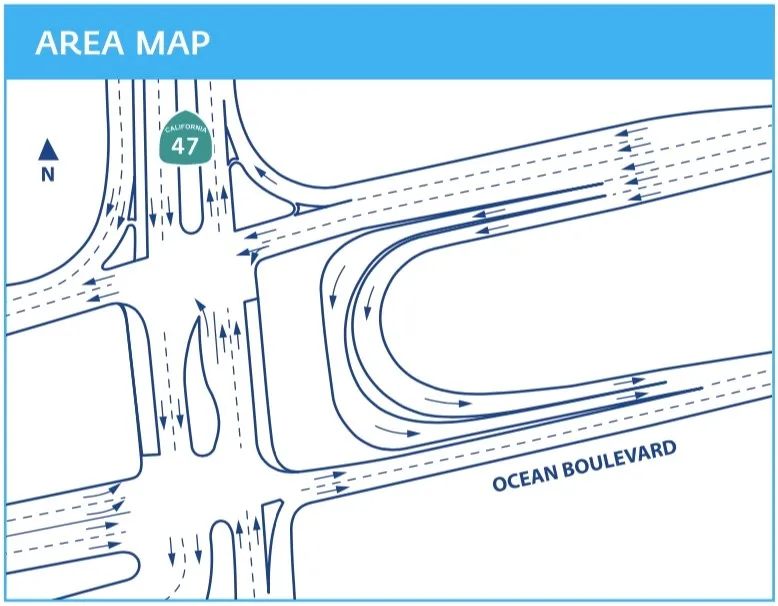
The design enables trucks and other vehicles to make a safe and free-flowing U-turn at the west end of the project at the port access undercrossing, a second tunnel near the intersection of Ocean Boulevard and State Route 47 (SR-47) on Terminal Island.
The Texas U-turn - named because it is a common feature at intersections in the state of Texas - enables vehicles traveling on one side of a one-way road to make a U-turn onto the opposite road without stopping at a traffic signal.
“This traffic feature was proposed by the contractor to reduce the expense of building and maintaining flyover ramps for vehicles entering and leaving our Pier T complex at the Port of Long Beach,” said Duane Kenagy, capital programmes executive for the Port of Long Beach. “This nonstop U-turn is among many features of the new bridge that will provide a more efficient flow of cargo traffic in and out of our port.”
The US$1.47 billion project to replace the current Gerald Desmond Bridge will provide the Port of Long Beach and greater port complex with a bridge capable of meeting the needs for international cargo movement for the next 100 years.
When fully completed, the new cable-stayed bridge will include six traffic lanes and four emergency shoulders and a higher clearance than the current bridge to accommodate larger cargo ships. There will also be a bike and pedestrian path with scenic overlooks and more efficient transition ramps and connectors to improve traffic flow.
The new bridge, to be completed in spring 2020, is a joint effort of Caltrans – the state transportation department - and the Port of Long Beach, with additional funding support from the US Department of Transportation and the Los Angeles County Metropolitan Transportation Authority.







